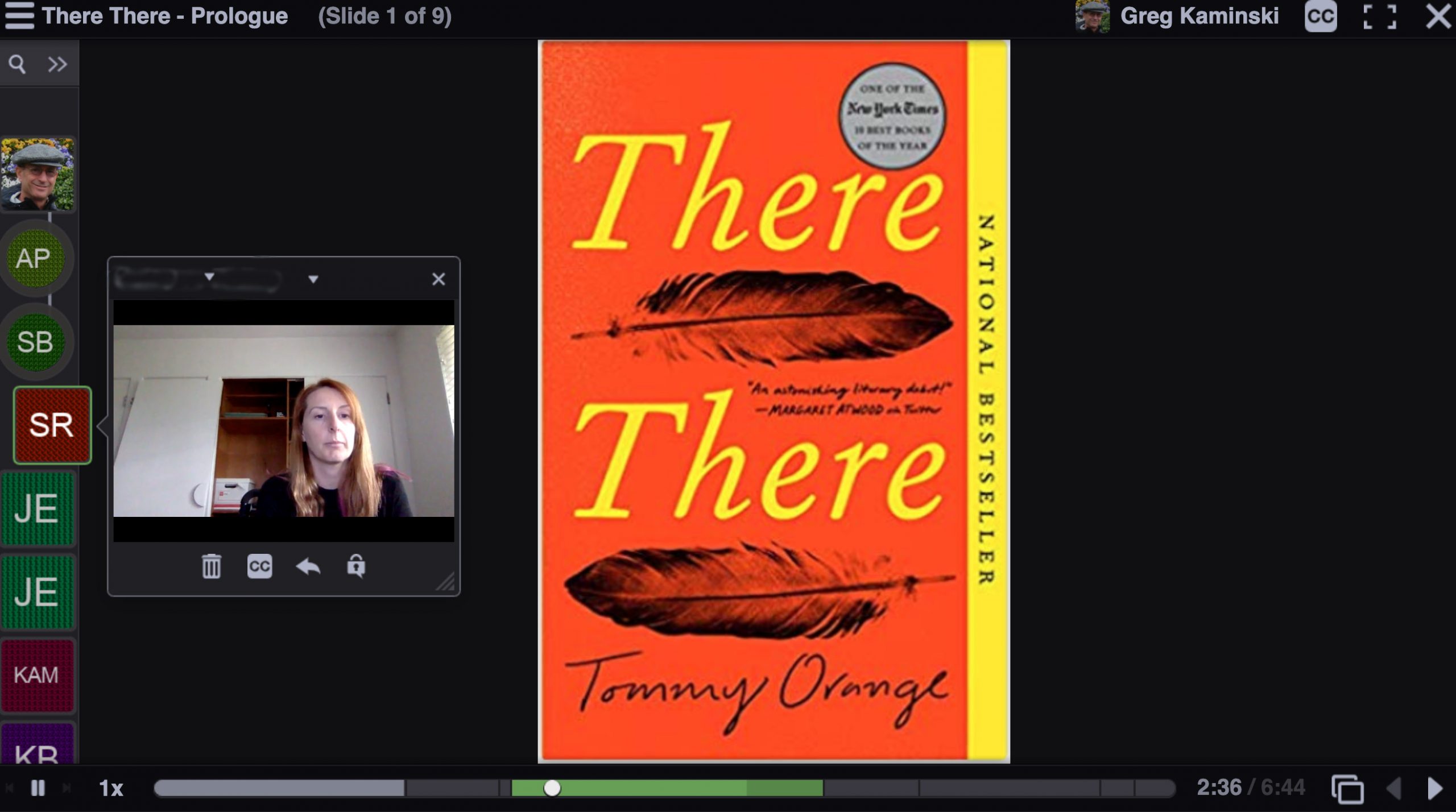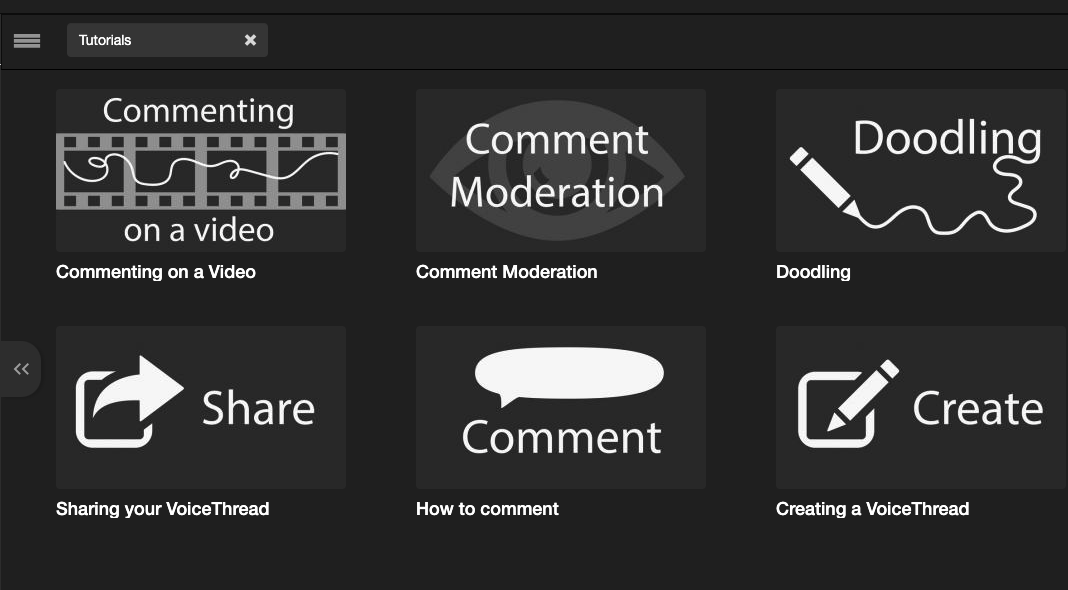This content was published: May 20, 2020. Phone numbers, email addresses, and other information may have changed.
Humanize your course discussions with VoiceThread
Posted by Greg Kaminski
 Looking for a way to take the text discussions in your class to the next level? Do students feel empowered by contributing to text discussions in your class? Providing students the opportunity to add media and their own voice will further enrich the discussions in ways that promote student engagement and social presence. It is an excellent tool to help build a sense of belonging to the class community.
Looking for a way to take the text discussions in your class to the next level? Do students feel empowered by contributing to text discussions in your class? Providing students the opportunity to add media and their own voice will further enrich the discussions in ways that promote student engagement and social presence. It is an excellent tool to help build a sense of belonging to the class community.
VoiceThread is an excellent tool for humanizing your course discussions. It allows you and your students to build visual and audio elements directly into the discussions. It can be empowering for students to be able to add their own voice in this way, perhaps along with their own images or media they have found that represents their view. It can be used in a wide variety of subject areas, e.g. from interaction among students learning a language to giving individual feedback to a guitar student trying a new finger picking pattern.
You already have access to VoiceThread directly within D2L Brightspace. As with text discussions, it is an asynchronous tool. You and your students can create, upload, and share slide presentations, documents, images, audio, and video. Replies are made through audio, video, text, or phone. You can also keep a VoiceThread private to use it as an individual assignment/assessment. As for accessibility, VoiceThread works with screen readers, and the threads can be captioned. You can also use an iPad or tablet in connection with VoiceThread.
What does the research show?
Among the leading researchers in this area is Michelle Pacansky-Brock (Ed.D.), California Community College system. Here are some of her findings about voice discussions in a 2 year study. (Pacansky-Brock, 2014. Most data collected in one class per semester for four semesters, n=59)
- Make students nervous (78%)
- Reduce anxiety in students in just 3 weeks (from 78% to 12%)
- Voice discussions improve the sense of being part of a group (91%)
- Are preferred over text comments (66%)
- Contribute to a perceived improvement in students’ communication skills (87%)
- Increases retention of information (89%)
- Improves students’ ability to reach learning objectives (89%)
- Using voice discussion supports diverse learning needs.
- Most online students (85%) do not speak in their classes.
- Most online students (81%) want voice discussions to be used in more classes.
Examples of VoiceThread use at PCC
Some of your colleagues are already using this tool. Here’s what a few of them have to say…
Greg Kaminski, Reading
I used VoiceThread with my hybrid RD 115 class. Students uploaded images and posted comments in connection with the prologue of the novel There There, by Tommy Orange. The addition of visual and audio elements engaged students at a higher level and brought additional clarity regarding the various people and events mentioned in the prologue.
Debra Lippoldt, FN 221, Personal and Social Frameworks of Nutrition and Healthy Aging
The final project of FN 221 is a synthesis capstone called “Big Idea”. Students draw upon their exploration throughout the course to tackle one aspect of health and aging to develop an approach to solve their specific issue. In addition to submitting a paper, they create a “Show & Tell” exhibit that is shared with all via VoiceThread. They create a one-page exhibit such as a brochure, poster, flyer, photo or even video that describes the elements of their project. Students spend the final week of the course reviewing and responding to classmates ‘Show & Tell” as an alternative to a typical discussion assignment.
Most students share very positive responses to the use of VoiceThread. Since it is a new technology that at first seems intimidating, thanks to student input, I began using VoiceThread for the Introduction discussion assignment so students learn the technology well in advance of using it for the end of the term project. For the introduction, students post a photo that represents an aspect of aging to them, and then record their audio introduction responding to several questions. Students say that it is a great way to get a more personal introduction.
Sarah Bentley, Spanish
Each week I post a ~30second video of myself talking about the current pandemic situation, using the grammar that we’re studying that week, and end with a question or prompt for students. As part of their weekly homework, they post a video of themselves responding to my prompt. I encourage them to post replies to one another too.
I like the video capability. Seeing one another’s faces makes the communication feel more authentic, despite the asynchronous aspect. I like that I have multiple options for responding to students’ video posts: private text reply, public video response, only audio response, etc. I also like that it’s seamlessly embedded in D2L.
Libardo Mitchell, Spanish
Since we are teaching mostly asynchronously, this is a very helpful tool. I have been using it to post oral assignments and evaluations for my students. Activities range from watching my recorded lessons, to posting audio and video assignments.
Besides one on one communication with my students via Zoom, VoiceThread has been the most reliable way for me to hear students actually use the language. Initially I started using it once per week, but as time has progressed, I have decided to post 3 or 4 activities per week. I noticed that students prepare and pay more attention to listening and speaking content because they know they will be expected to produce and apply the language in the VoiceThread assignments and evaluations.
Lara Mendicino, ESOL
I have used Voicethread in ESOL reading classes as a reading response option. I have also uploaded slides with critical thinking questions about a lecture or reading, and students have responded with audio or video—commenting on each other’s posts and creating an audio discussion board. It’s also been useful for pronunciation practice and oral presentations from students.
Students who prefer oral over written communication appreciate being given assignments centered around speaking and listening with the option to include visual aids. It’s easy to get students onto Voicethread, and using it is intuitive.
How to learn more
Training through VoiceThread
The workshops listed below are free and led by VoiceThread’s instructional designer and online educator George Haines. These are generally rather fast-paced and offer an excellent overview of VoiceThread. I highly recommend these workshops first, followed by more hands-on training through PCC. Some are still upcoming.
- Humanize Your Online Course with VoiceThread
This is an excellent overview, and here’s the Recording (Start at 2 minutes 30 seconds into the recording.) - VoiceThread Basics 1 – Upload, Comment, and Share
Tuesday, May 26 at 10:00am PT – Register - Using VoiceThread in D2L Brightspace
Tuesday, June 30 at 10:00am PT – Register
Tutorials
VoiceThread tutorials are available directly within VoiceThread and also on their website.
Training & tutorials through PCC
I will be offering VoiceThread training just prior to the start of summer term, so look for an announcement, or check the workshop schedule. Also take a look at our own VoiceThread guides.
If you have additional questions about VoiceThread, please contact me or one of our Instructional Support Specialists.
Resources
Pacansky-Brock, M. (2014). Learning out loud: Increasing voluntary voice comments in online classes. In Lowenthal, P., York, C., & Richardson, J. (Eds.), Online learning: Common misconceptions, benefits, and challenges. Nova Science.
Pacansky-Brock, M (2013). How to Humanize Your Online Class with VoiceThread. Smashwords.
